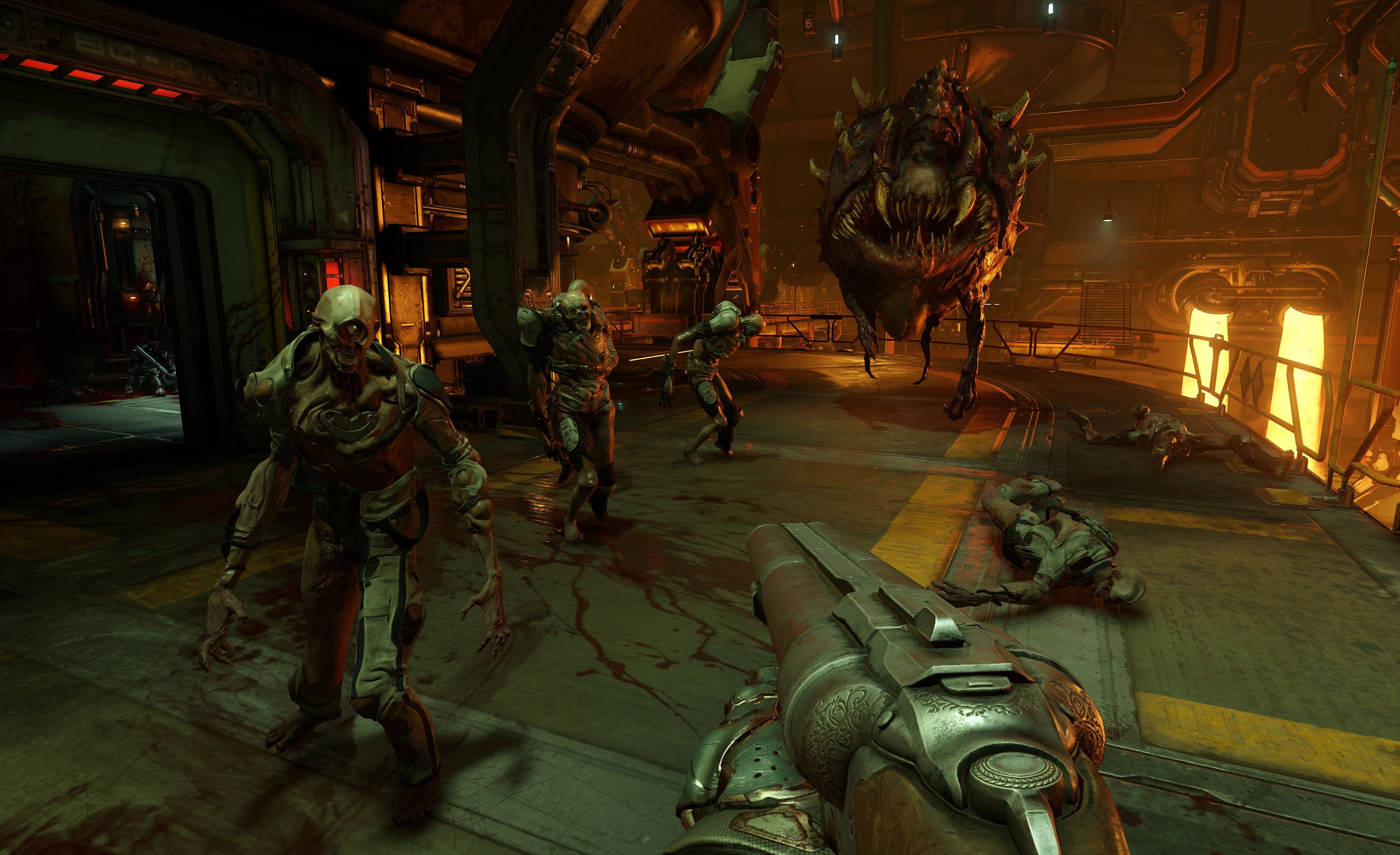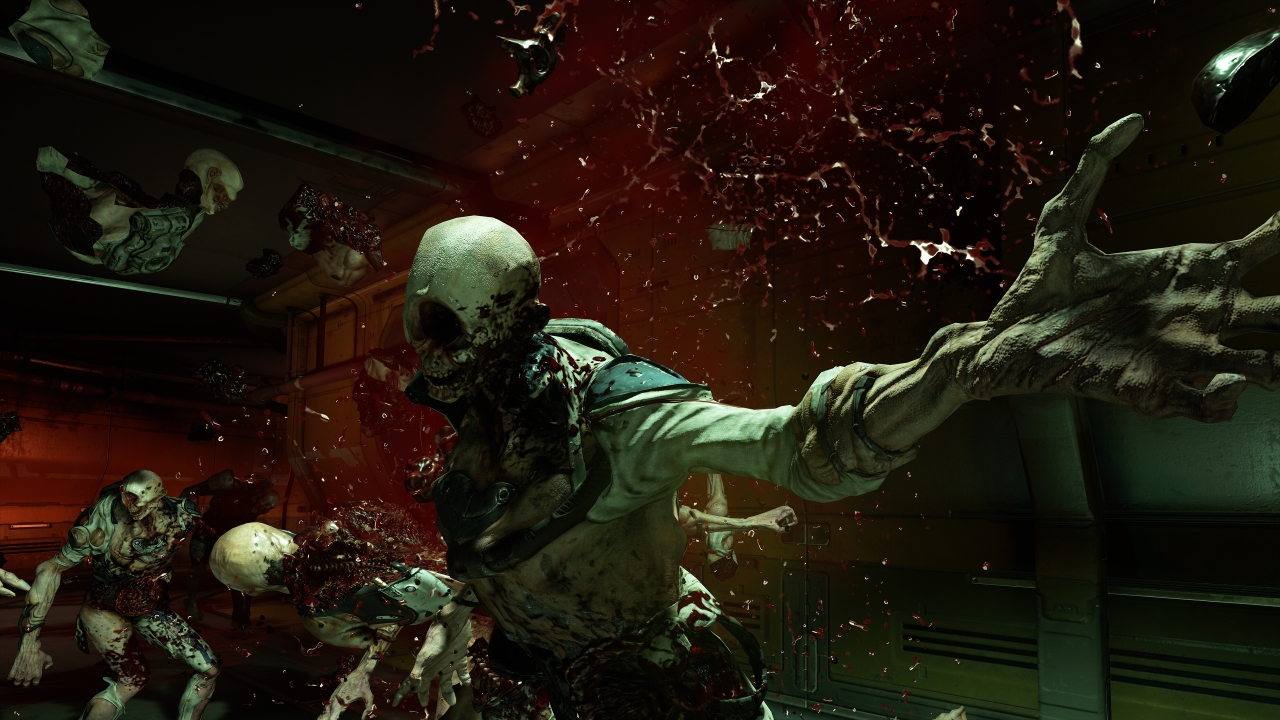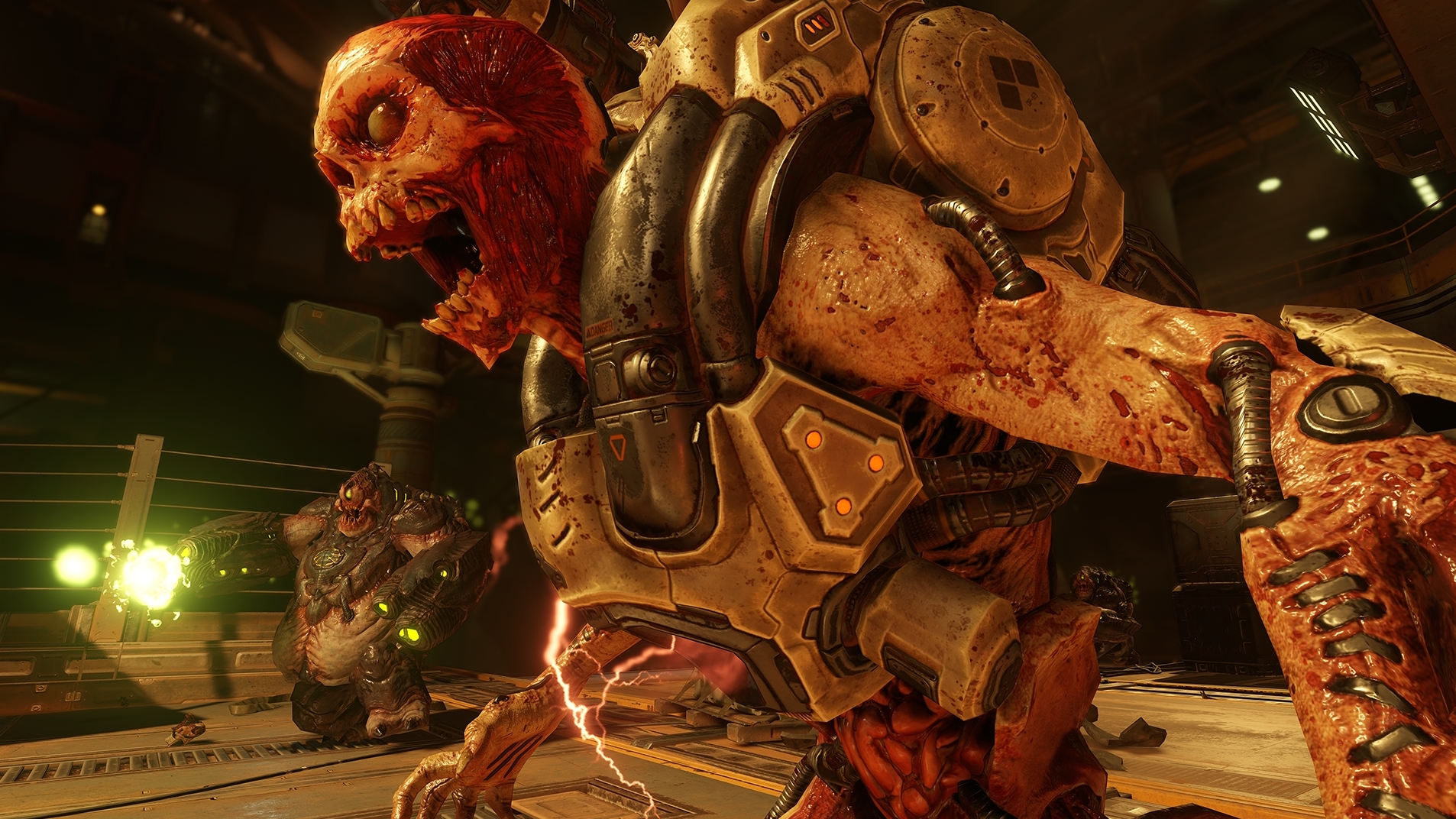The Doom series is very much like the Guns ‘N’ Roses of the video game world. When it first arrived it was ballsy, fast-paced and brutal beyond comparison. It defined much of what we see today in the games world.
Then it lost its way for a while and eventually disappeared off the map completely. The latest game is almost like the Chinese Democracy of the series. Announced way back in 2008 as Doom 4 for PC, PS3 and Xbox 360 it was to be a return to glory for the Doom franchise. It rapidly descended into development hell as id Software, the series’ creators went through numerous trials such as the overdue release of Rage, their previous title, a buyout by Elder Scrolls makers Bethesda and the loss of the final founding member John Carmack to VR start-up Oculus Rift.
During those eight years of development hell the game was taken back to square one at least once and so, it could easily have been as bad as Guns ‘N’ Roses’ awful Chinese Democracy album. Thankfully it is very much not.
What we get instead is a return of Doom’s glory days with a focus on the very things that made the original games so special in the first place. There’s a few modern touches to make the newest generation of gamers feel more at home too, as well as all of the visual bells and whistles that come with the latest generation of console gaming hardware.
Call of Duty’s dominance in the first-person shooter world has drastically changed the way FPS games are played. Gone is the focus on the break-neck pace of run-and-gun gameplay to make way for a more ponderous flow increasingly using cover mechanics to bring a more authentic feel to the gunplay.
Doom 2016 throws all of that nonsense out the window and folks who’ve been weaned on the likes of COD and Battlefield may be in for a nasty surprise. Indeed it took a small amount of adjustment for me as I began playing to get my head around Doom’s gameplay mechanic.
It has been designed as a brutally paced shooter and it actively punishes players who like to hide behind cover and take their time planning their path through a level. Gone is the iron-sight aiming option with only option being to shoot from the hip. Instead the left-trigger, traditionally used for finer aiming, now enables a weapon’s secondary fire modes which can be unlocked with upgrade modules hidden throughout Doom’s very intricately-designed levels.
The enemy AI too is designed to discourage the use of cover for anything more than a split second. Enemies will swarm you; they’ll jump or teleport around behind you and generally do anything they can to surround you forcing you to keep moving at all times.

There’s one final mechanic to encourage players to pick up the pace and that is the Glory Kill. Do enough damage to an enemy – and I mean any enemy – and they will start to glow either blue or gold. When they glow (blue means the enemy is staggered but out of range of the Glory Kill while gold means they are close enough to execute) it means that they have been briefly stunned and players can use an execution move on them by pushing down the R3 button.
This unleashes a wide variety of extremely gory, context-based finishing moves from ripping hearts out to beating them to death with their own arm to crushing their skulls under your boot if you attack from above. It’s exceedingly satisfying and has the added benefit of causing the deceased enemies to drop additional health and ammo pick-ups helping to keep you in the fight.
Levels have a nice bit of variety too. The game is set on Mars (where else?) in a science factility where the research has led to an accident that has torn a hole in the fabric of the universe allowing Hell’s minions to pour in and corrupt our reality in a graphically macabre fashion. This means one minute you’ll be crushing demonic skulls in tight corridors and the next you’ll be fighting cybernetically enhanced beasts on the surface of Mars itself.
Pacing is almost perfect. Doom 3 was guilty of re-using the same set-piece over and over again to keep the game moving – enter a room; lights go out; monsters appear; lather, rinse, repeat. Boring. Doom 2016 just keeps it simple giving you short periods of exploration (finding hidden secrets are a necessary evil for tooling yourself up for the fights ahead) as a breather in breathless between set-piece battles that usually involve large and variety hordes of enemies.
There are some nifty simple levelling-up mechanics that allow you to keep one step ahead of Hell’s minions. One is the weapon upgrades system. Each weapon has two choices of mods that can further be upgraded to add extra combat flexibility and these are available from droids hidden around Mars. The shotgun, for instance, offer the option of a burst-fire mode and explosive rounds. These can be switched between in-game using the up button on the d-pad allowing you to freestyle your way through combat.

Both modules can be upgraded adding extra bonuses like faster recharge times and more damage. The final tier of upgrade is opened up by completing a challenge usually involving killing so many enemies using the module.
Every level also includes challenges to complete that vary from finding all of the secrets to killing a certain amount of enemies in a certain way. These unlock extra weapon upgrade points which are used to open up the additional features of each weapon mod.
A lot of thought has been put into how the single-player mode of Doom is played with all of the elements tied neatly together to cleverly and simply reward players better for going all out and getting the most out of each level and every encounter. There are also Rune Challenges hidden throughout the game which unlock special passive enhancements to the player like increasing the radius at which your player absorbs the items dropped by an enemy after a glory kill.
What’s more the whole thing is wrapped up with a crushingly heavy industrial metal soundtrack that complements the frantic action almost perfectly every time.
While the single-player is fresh, exciting and deeply-involving, Doom’s multi-player provides a bit of a disappointing contrast. It retains the pace of the single-player but it feels very rough around the edges. The visuals are toned-down enough that you notice a bit more jagginess and jerkiness of movement during play. It also lacks the imagination and inventiveness that brings the single-player to life. It’s just a selection of the same old multi-player modes like team deathmatch and capture the flag boosted by a load of blandly customizable player models and loadouts.
Overall Doom is a stunning achievement. It took id Software long enough mind you. The simplicity and depth of the single-player is staggeringly fresh for a series that is pushing 23 years old. Where it is let down is the stale and rough feeling of the multi-player. It’s disappointing given that Doom was the series that gave us deathmatch mode multi-player in the first place. It’s not bad, it’s just not enough especially when contrasted such an impressive single-player mode. Doom is still well worth the money though for the pure blood-soaked joy of the single-player. It’s definitely more Appetite For Destruction than Chinese Democracy.
Score: 8⁄10
